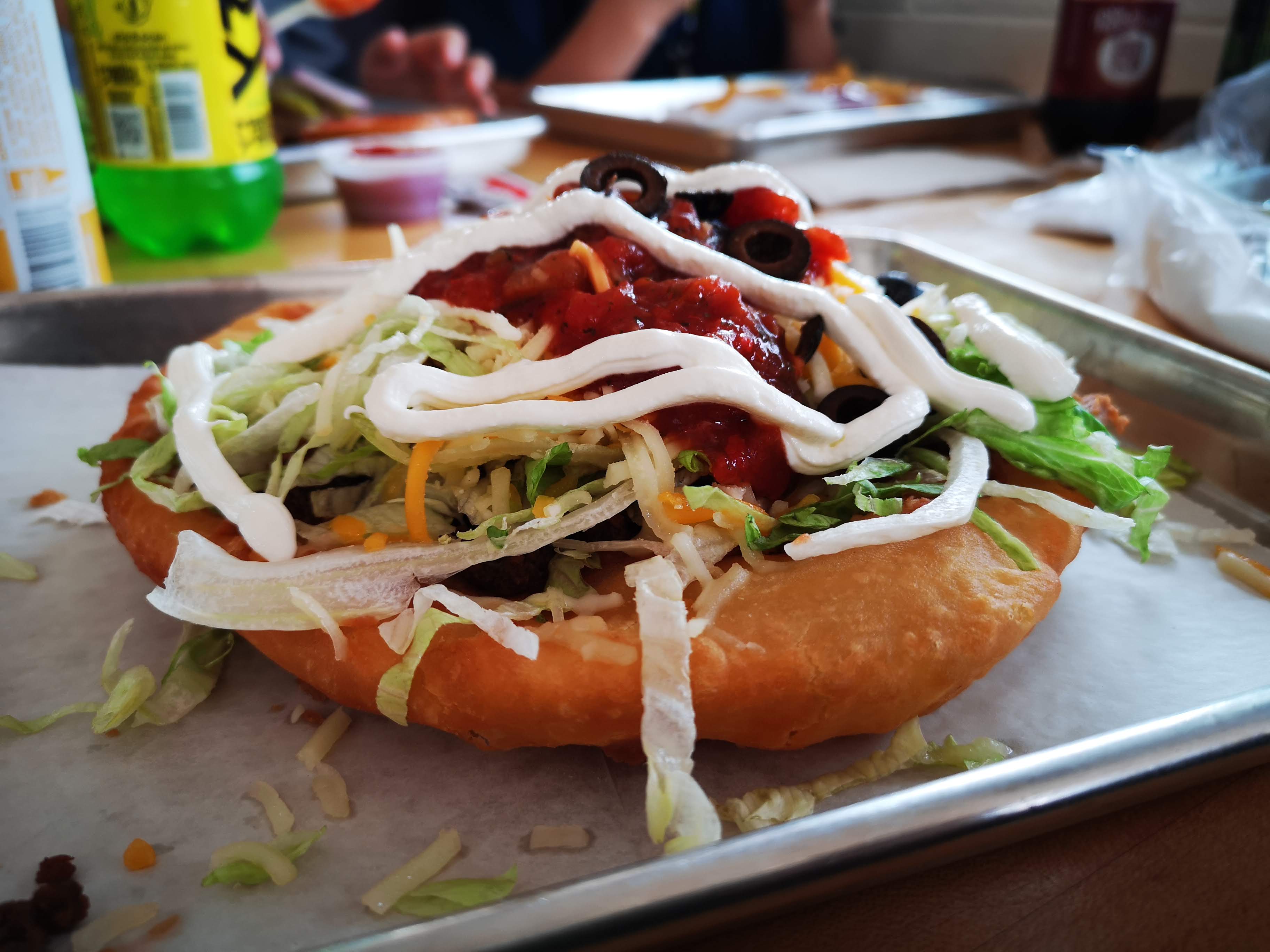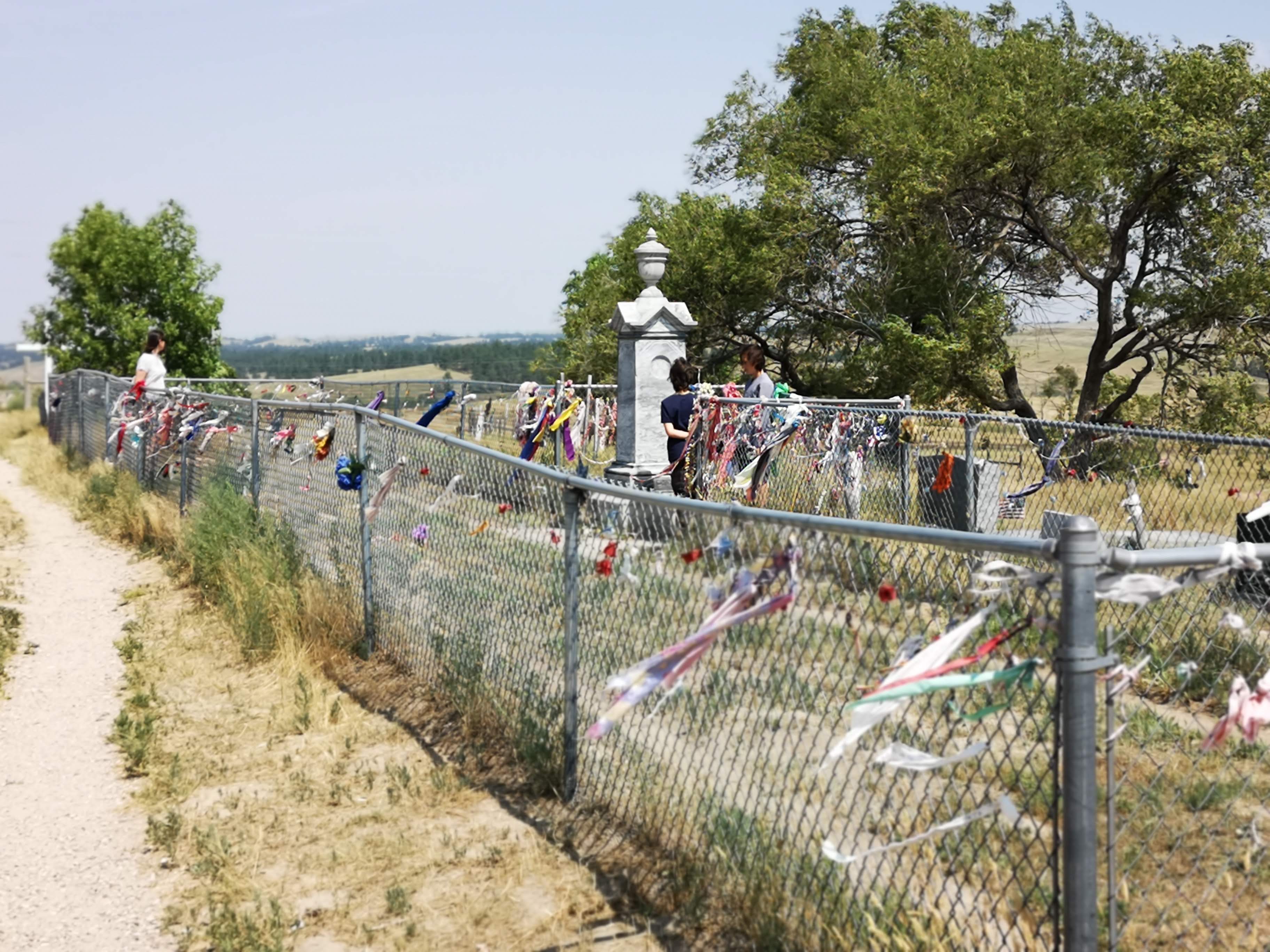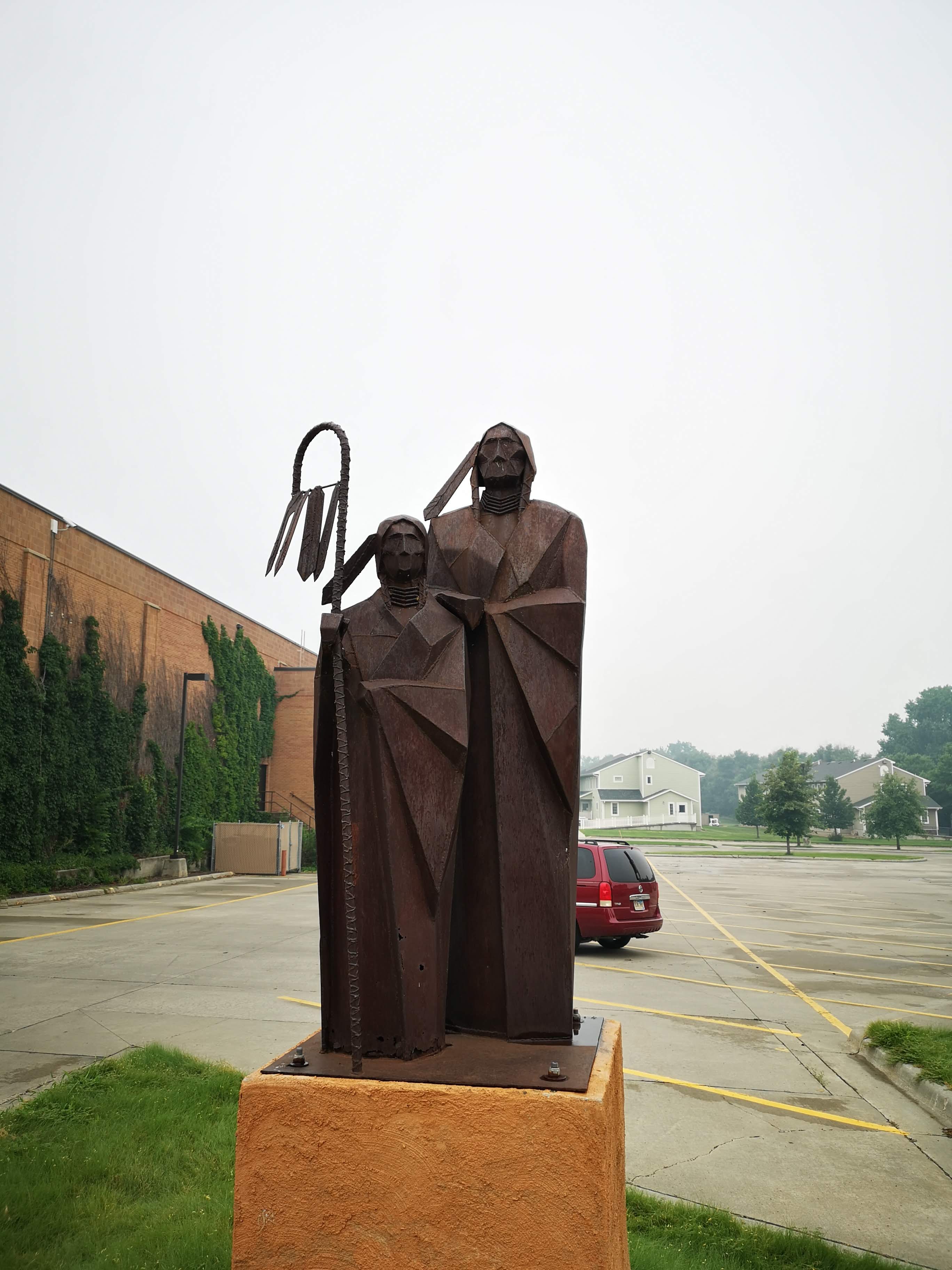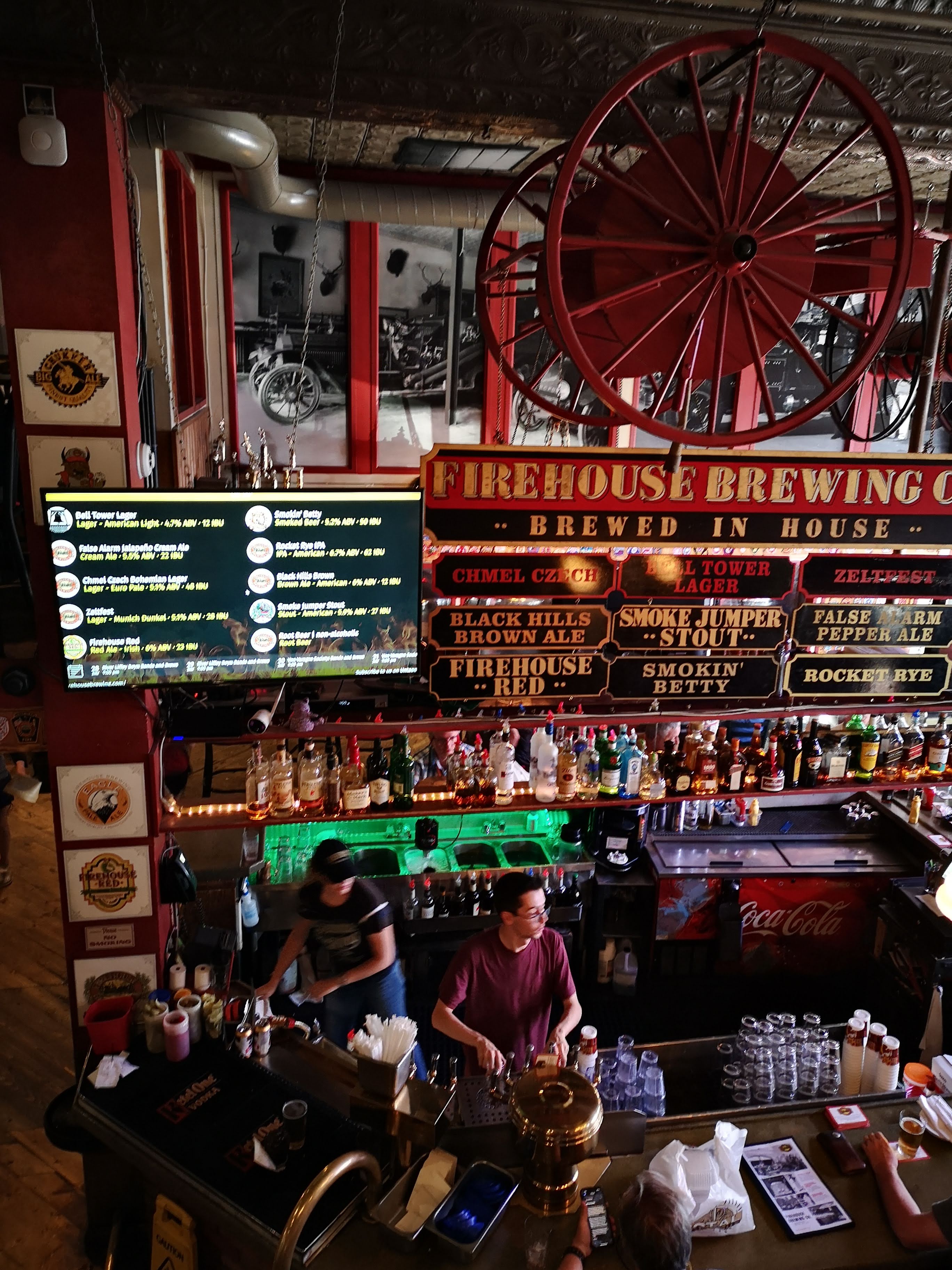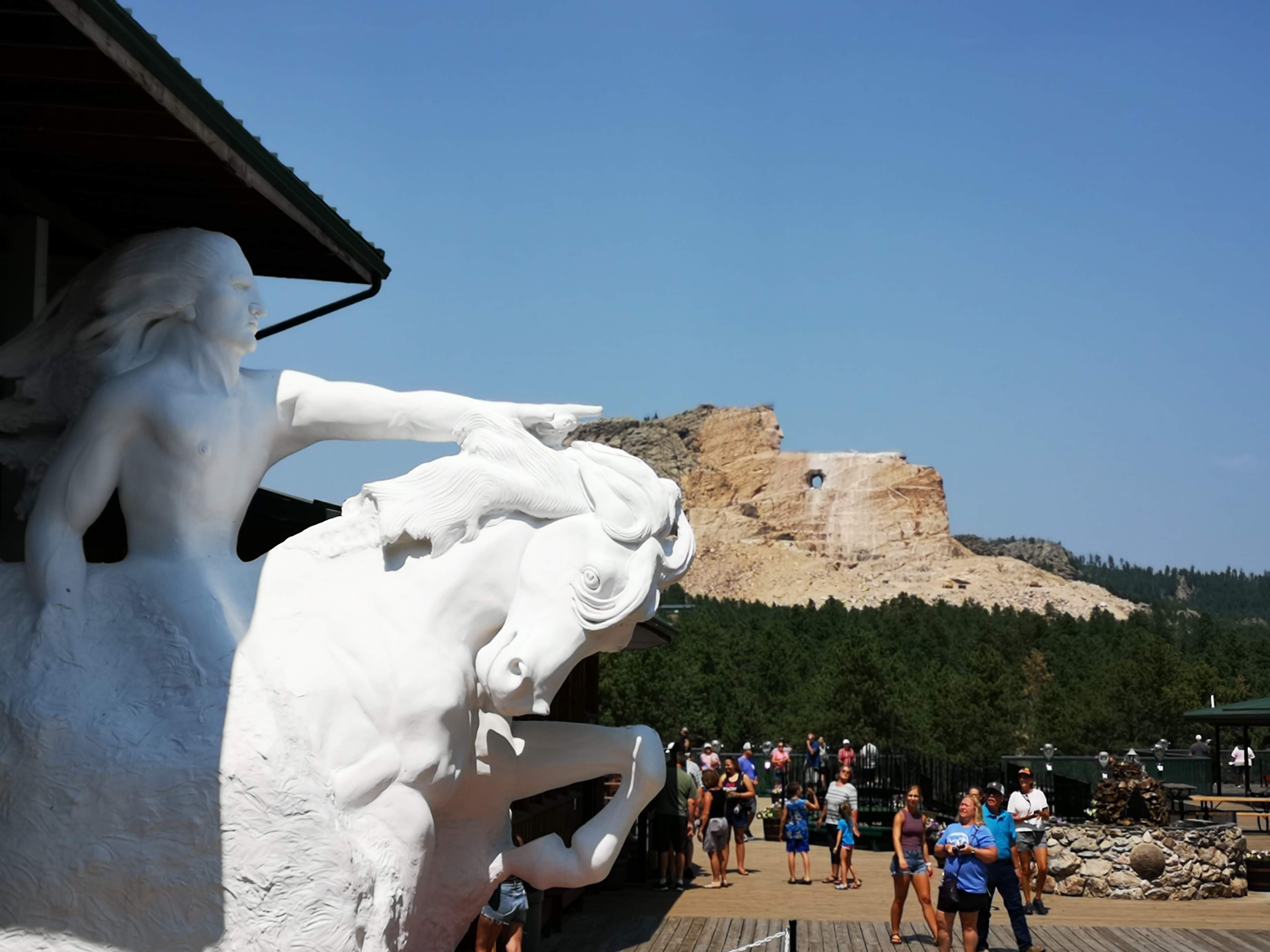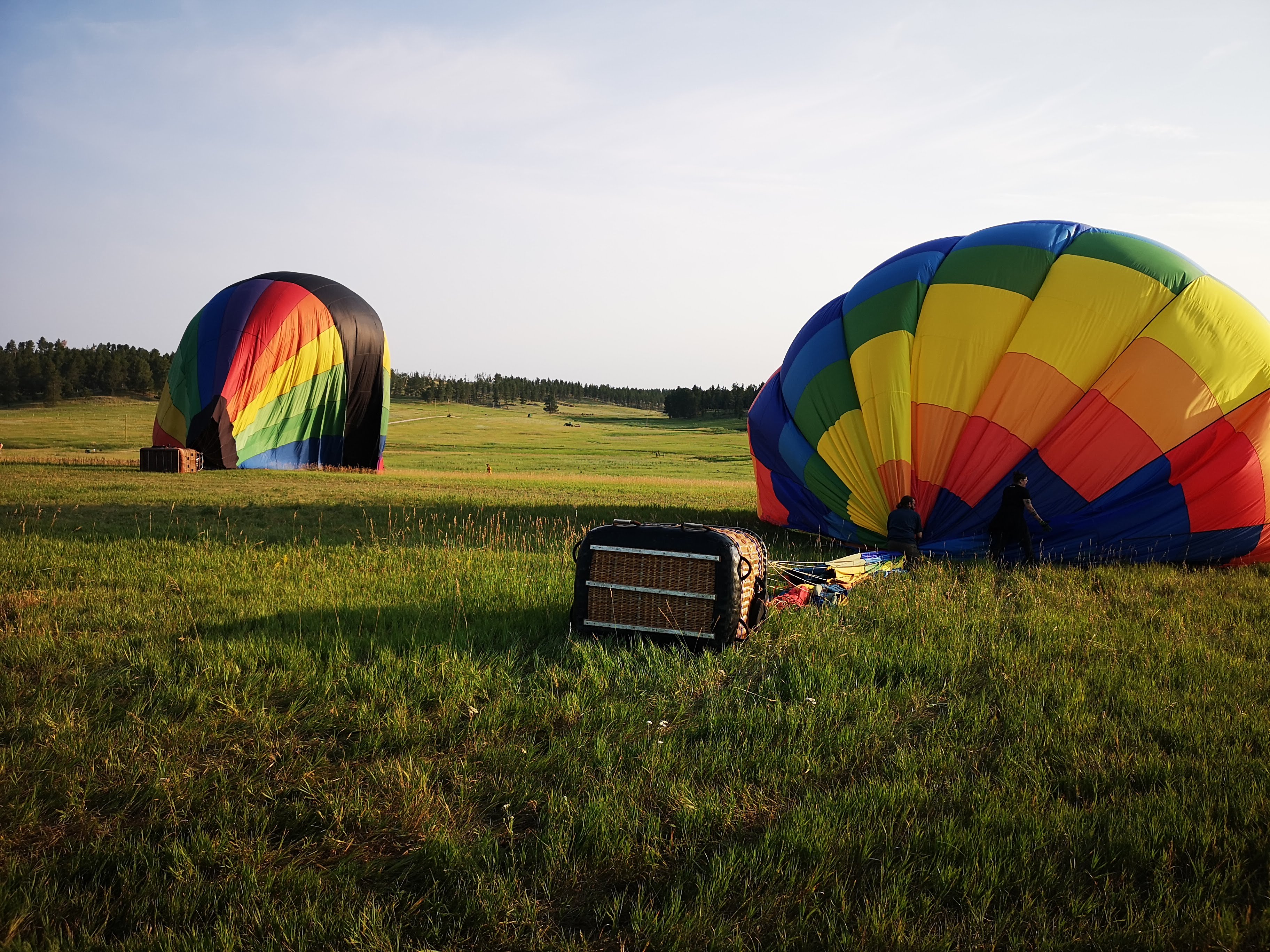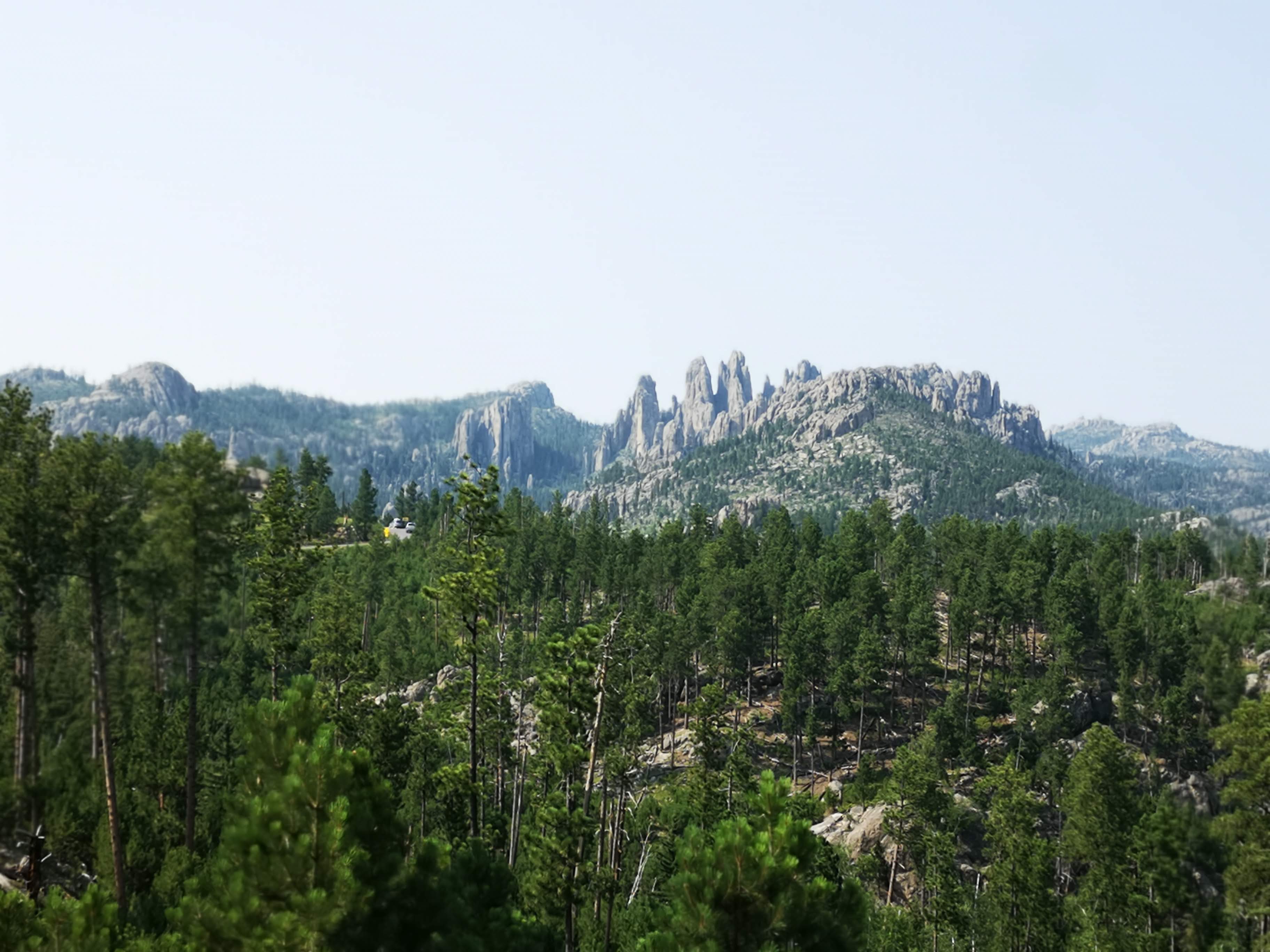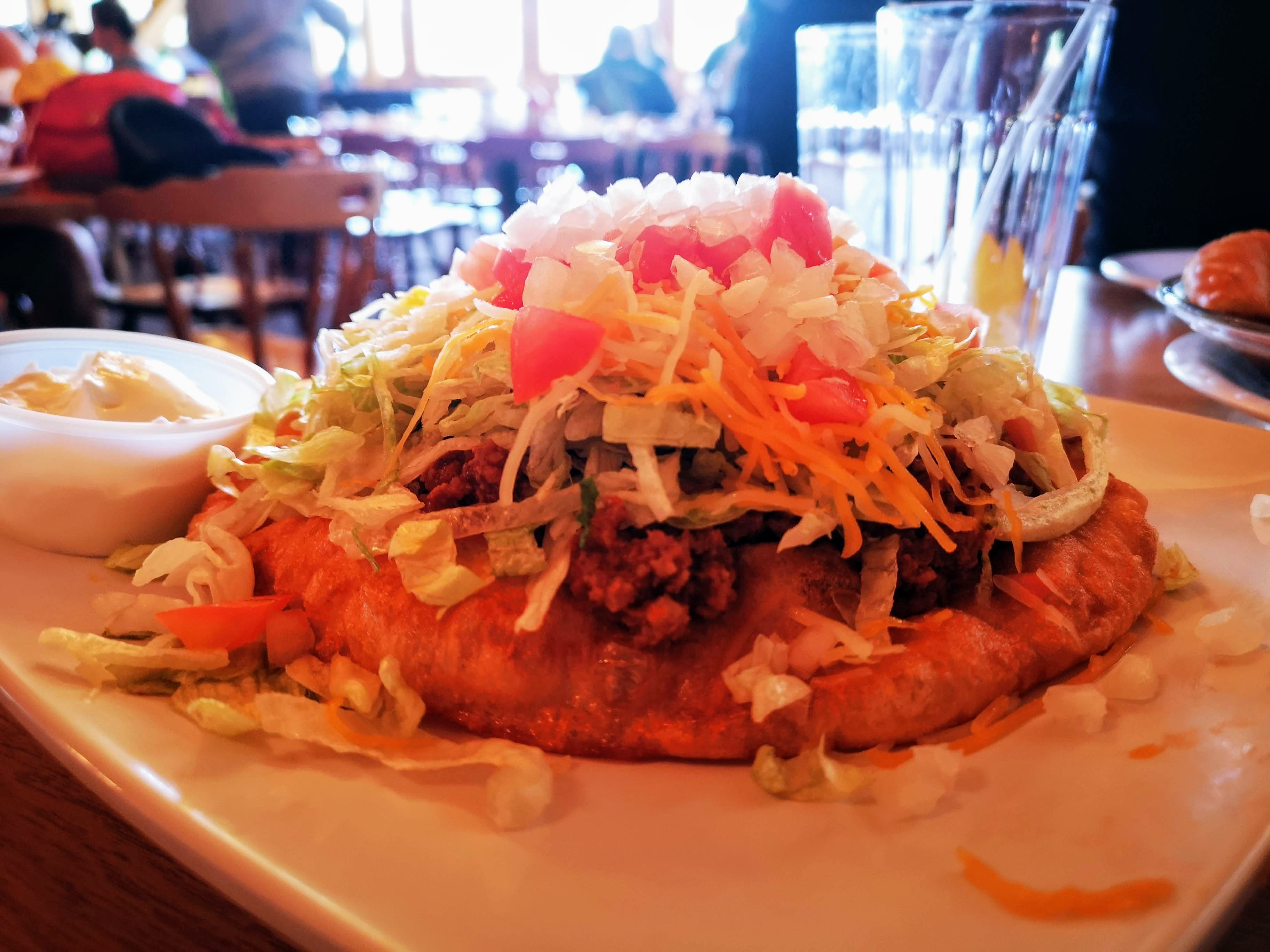There’s a sense among some people that America isn’t old. I’ve heard it over and over again when people are talking about how old Prague or Paris or Rome is. The refrain is often the same, “we just don’t have stuff that old in America,” when referring to places and landmarks built during the Age of Colonialism between the 1500 and 1900s. Part of that is the complete erasure of Indigenous Americans from the wider conversation about the United States. Another part is simple ignorance of the width and breadth of the Indigenous communities/nations in this country.
There were cities all over this continent that were simply wiped out by European and then American colonialism. So a huge part of the reason that America doesn’t “have stuff that old” is that it was taken away and never allowed to grow and become “old” in the first place. Hell, 1,000 years ago, cities like Cahokia were bigger and more population dense than Paris or London. Then the Spanish showed up and now it’s an archaeological site.
Still, you can — right now — go to St. Louis and travel about 30 minutes east of the airport and find a massive expanse of an ancient mound city in nearby Illinois. Traveling there will give you a glimpse into the vastness of the Mississippian Empire which was largely extinguished by the 1600s, thanks to the Spanish spreading canons and viruses throughout the continent the century prior. Today, Cahokia is truly vast. The ancient city covers 2,220 acres with 120 mound structures still remaining. It’s estimated that up to 40,000 people lived there at the peak of the city around 1100/1200, which would have made it a larger metropolitan area than both Paris and London at the time.
For most, walking around a place like Cahokia is a look backward at something lost to time forever. When I went there that tragedy rang true to me too. However, what was more tragic was what could have been and what we/Indigenous people/all of us missed out on. This was a great city in North America with culture — a food scene, sports arenas, nightlife, and all the trappings of a city — all snuffed out before it had a chance to become “stuff that old in America.” I think about how rural places like Japan were up until very late in the 1800s and where that country is today when it comes to advanced cityscapes and preserved historical districts. Had history gone a few different ways a couple of times, maybe that could have happened for the Pacific Northwest Salish world too, or the Lakota in South Dakota, or the Seminole in Florida … or the people of Cahokia.
This leads me to an admission: It’s painful traveling around the U.S. and the wider world as an Indigenous person. In the U.S., you’re constantly reminded of everything you and others lost at every turn. But to say that there’s “nothing left” is also untrue.
Speaking of 1,000 years ago, a quick trip to New Mexico and you can find yourself staying in the longest continuously inhabited town in the United States in Taos Pueblo. The neighborhood is only 16 acres, is home to 4,500 folks today, and is part of the larger Spanish and American colonial city of Taos. That said, this is a place that was first built around 1,000 years ago and has been continuously inhabited by the Tiwa-speaking people since. If you want to talk old world, Berlin didn’t even exist 1,000 years ago and yet I’ve heard people in Berlin say “there’s nothing as old as their city in America…” It’s frustratingly untrue and a very colonial POV of the world. But that’s not the point.
The point is, we’re still here. And yes, there’s old stuff to be enjoyed and experienced in the United States too. And as an Indigenous American who grew up on the classic American road trip, I can tell you from experience that there’s a lot to be experienced in “Indian Country” out there.
I’ve spoken about hitting the Olympic Trail in Western Washington and treating it as a smoked salmon trail that takes you from Indian Reservation to Indian Reservation. I’m not going to rehash that as you can read it right here and then go and do it. I will say that it’s a great place to start your journey into Indian Country, as you’ll be treated to beautiful natural beauty, you’ll eat great Indigenous food, and you’ll get a real sense of the poverty that still reigns supreme over Indigenous life in America.
As mentioned above, you can fly into St. Louis and visit Cahokia or travel to Taos and stay in a pueblo. But there’s still so much more — from New Echota in Georgia where the Cherokee had built entire towns before being ethnically cleansed from the area to Oklahoma (another part of Indian Country that you can visit right now) to ruined cities of Chaco Canyon (also New Mexico) to the Hopewell Mounds in Ohio to Little Big Horn Battlefield in Montana and so much more.
But all of those places are about looking back. Let’s look at “right now” — the goal of our forthcoming “Uproxx Fall Travel Hot List.” You can hit the road and find modern Indian Country in every corner of America as well. And one of the absolute best places to do that is in South Dakota.
Below, I’ve cobbled together an itinerary through the state that hits important stops that’ll illuminate 21st-century Indigenous American life. What makes South Dakota so prominent, in my mind, as the perfect Indigenous road trip destination is that you’re immediately emersed in Indigenous life and communities the moment you step foot in Rapid City. And if you chose the right path, you can go ever deeper into those communities while supporting them with your tourist dollars and, hopefully, learning a little something along the way. After all, isn’t that the whole point of travel?
If this isn’t the road trip for you, well… the nation is rich with options for those who are ready to understand that America has a rich Indigenous history and that we, its Indigenous stewards, are still here right now.
Sample Itinerary Through Indigenous South Dakota:
First stop — Rapid City
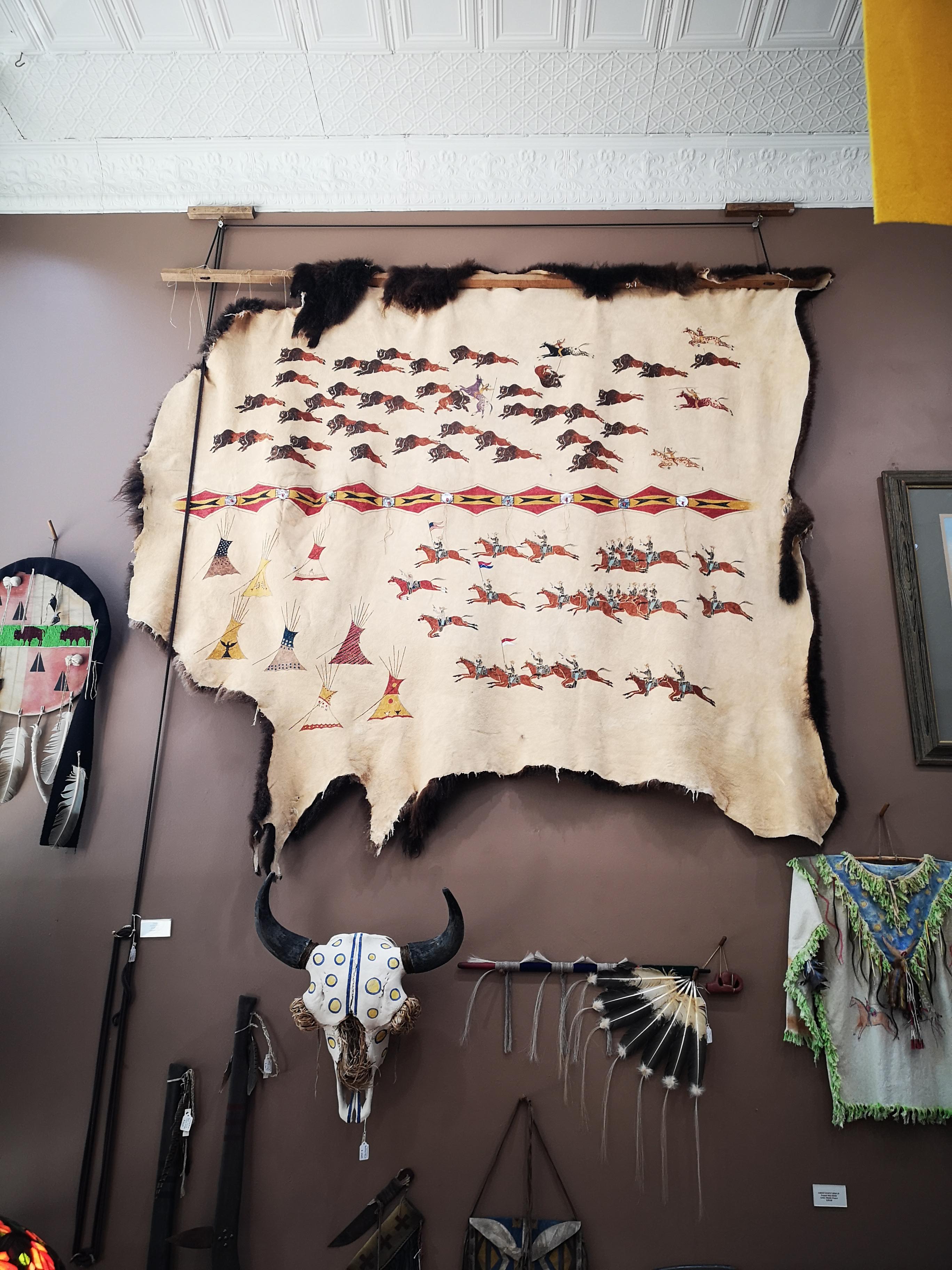
Rapid City feels like an Indian city that’s been blended with a very white American colonial one. On Main Street, you’ll find classic dive bars and gun shops next to Indigenous/Lakota galleries, shops, and street art. There are micro-breweries and pizza shops with board games next to protest banners proclaiming “You’re On Stolen Land!” It’s a place of multitudes, folks.
If you’re walking Main Street, stop into Prairie Edge Trading Co. & Galleries. One-half of the store is mostly touristy kitschy items. The other half is a large gallery that mostly features Lakota artists and both tribal and modern art that you can buy — a real souvenir, if you will. In the back, there’s a bead shop where you can get some supplies if you’re into that sort of thing. It’s run by Lakota who are shooting the shit about whatever projects they’re currently working on.
Across the street, you’ll find Art Alley which is a refuge for Indigenous street artists in the city. Near the top of the alley by the vintage Hotel Alex Johnson, you might come across some young Lakota kids freestyling and spray painting on any given day.
Second Stop — Crazy Horse/Black Hills
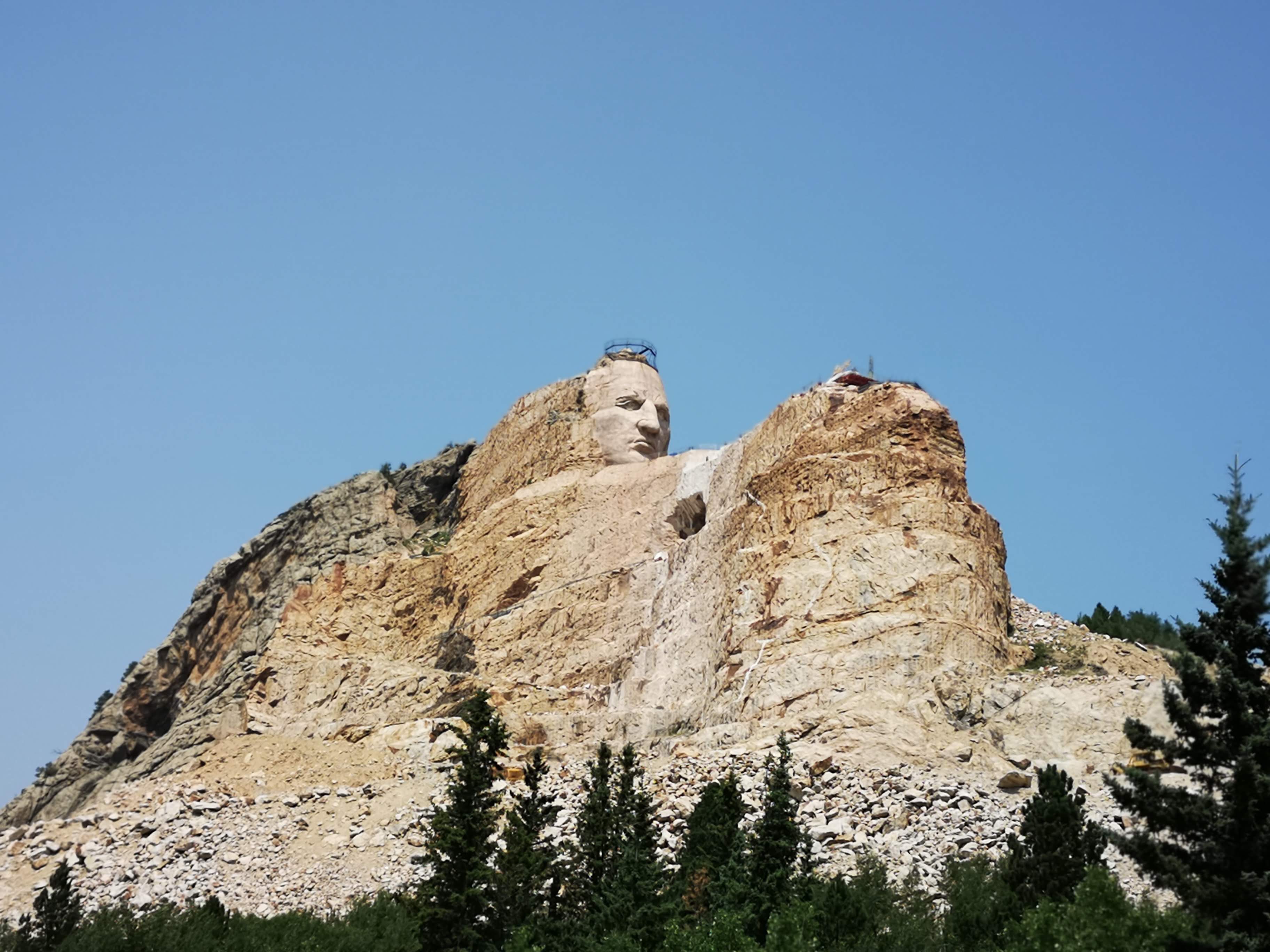
Heading into the Black Hills is a tough proposition for Indigenous folks. On the one hand, it’s an amazingly important cultural place where great introspection can take place amongst highly sacred mountains. On the other hand, it’s very heavily touristed. And unfortunately, the vast majority of those tourist dollars are not going to the Lakota who were promised their sacred land “as long as the grass grows and the water flows.” It’s frustrating to drive around and see so much money being spent and the Lakota getting none of it.
Rant aside, it’s also nice to do things that are touristy in the Black Hills even if the money isn’t going to the Lakota. Taking a hot air balloon ride at sunrise over the Black Hills is a spectacular way to see the whole region as it’s bathed in the rich morning light. Sometimes you just have to let the beauty of a place wash over you and that’s a great way to do it.
One way to really immerse yourself in Indigenous Black Hills culture is to stop in at the Crazy Horse Memorial and Indian Museum of North America. The memorial is the largest mountain carving in the world, or at least will be when finished. Crazy Horse is memorialized on the back of his horse, pointing back East to his ancestral homelands that the Lakota were pushed away from by the American colonizers. The Black Hills, the historical religious refuge of the Lakota, was where many a last stand took place before the weight of American colonial power crushed the great nations of the Lakota.
The greatness is on display at the Indian Museum of North America. There are rooms and halls full of artifacts from previous centuries alongside modern art from present-day Indigenous artists. Overall, it’s a place where the past and present are celebrated in equal measure.
Oh, and don’t forget to try an Indian Taco from the canteen.
Third Stop — Wounded Knee/Pine Ridge
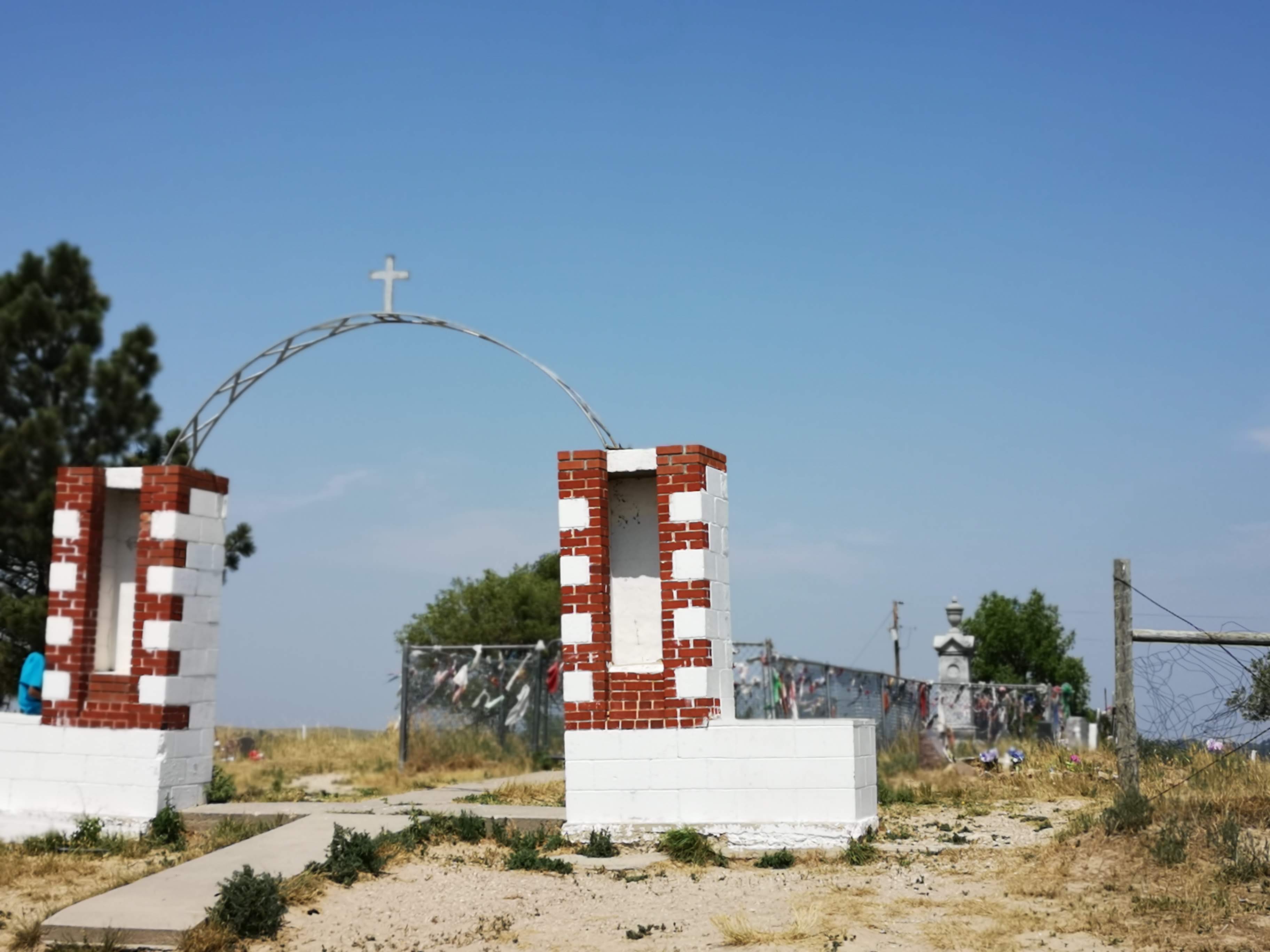
Further down the road from the Black Hills, you can take a trip through one of the world’s most impoverished places, Pine Ridge Indian Reservation. There are several stops in Pine Ridge that are worth hitting like the Red Cloud Indian School which was the site of forced assimilation of children and is still a fully operational school to this day.
The most important spot, however, is the Wounded Knee Massacre Memorial. The graveyard on a small hill just above the Wounded Knee Creek is surrounded by a seemingly endless sea of green grass, ebbing and flowing in the constant breeze of the Great Plains. There’s no infrastructure in the place, besides a footpath to a small arch with a cross and a cemetery surrounded by a falling-apart cyclone fence. It’s woefully in disrepair.
Still, the memorial honors the people who died on a fateful cold December day in 1890 by a hail of U.S. Army gun fire, rifle butts, horse hooves, and blades. Over 300 unarmed and starving men, women, and children were slaughtered with their corpses left to freeze on the prairie that day for the crime of … basically … dancing and practicing their own religion. 20 U.S. soldiers received the US Army Medal of Honor for that heinous act of genocide. Those medals have never been rescinded.
When you’re there, this history isn’t on display. There’s a small gravestone for the massacred and then the grave markers of the descendants of those who fell at Wounded Knee that day. Daughters, cousins, sons, fathers, and mothers had their remains buried at the site to be closer to the ones they lost in 1890. There’s often a Lakota elder hanging around to tell stories of their family members buried at the cemetery or the ones they lost at the massacre. These elders make their meager income by being quasi-docents for a place the U.S. would prefer you forget about. So please, give any elder there telling stories a large tip (a $20 or $50 is fine).
Last Stop — Akta Lakota Museum
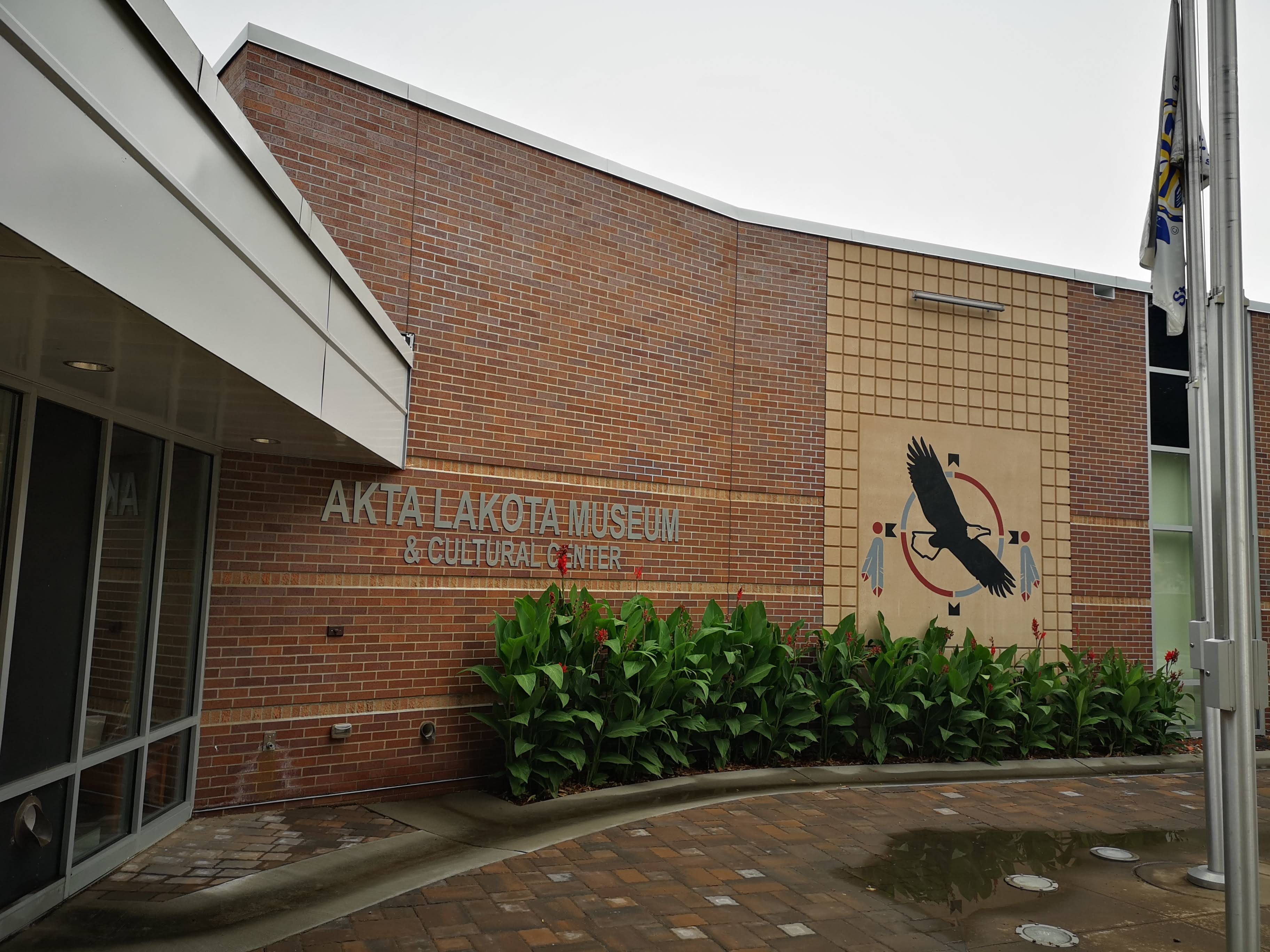
Further east on the banks of the mighty Missouri River at the intersection of the Lower Brule and Crow Creek nations, you’ll find the Akta Lakota Museum. The museum is on the site of the Saint Joseph Indian School, which also has a dark past of forced assimilation of Native kids over the last two centuries; but is reformed now.
The museum is a fascinating and interactive look back at the history of the local Lakota culture. It’s free to enter and only takes about 30 minutes to walk through. It’s kind of an old-school museum with life-size dioramas of “life scenes” from different eras of life on the Plains reaching back millennia to the present day. There’s a gift shop featuring work from contemporary Indigenous artists, including the kids at St. Joseph School. The museum, displays, and history is the work of the local Lakota students and historians and offers an unfiltered and deep look into their vast culture. It’s a must-stop.
Additional Photos from South Dakota:
